The CCC’s imprint on Yosemite
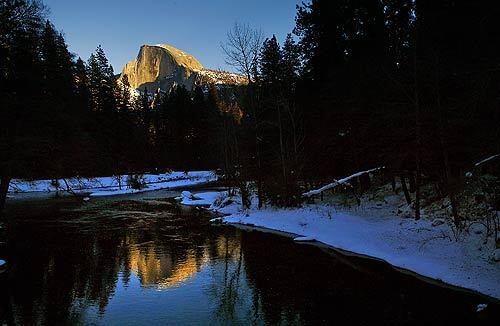
Yosemite National Park’s Half Dome is reflected in the Merced River in this view from Sentinel Bridge. Members of the Civilian Conservation Corps replaced climbing cables on the mountain, among other projects in the park. (Brian Vander Brug / Los Angeles Times)
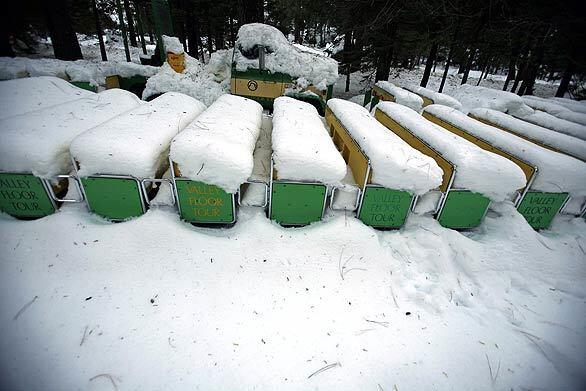
Snow covers Yosemite Valley Floor tour trailers that have been parked for the winter at the Housekeeping Camp. Numerous projects in Yosemite were undertaken by the CCC, which was born with the Depression in full roar and one out of four American wage earners out of work. (Brian Vander Brug / Los Angeles Times)

The Yosemite Valley can be seen from inside the Wawona Tunnel, which CCC crews constructed in 1933. (Brian Vander Brug / Los Angeles Times)
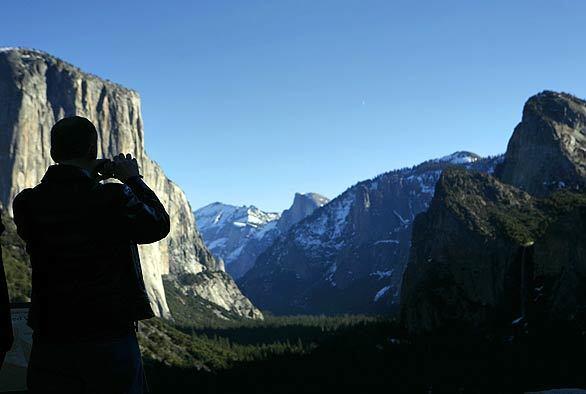
A visitor takes a photograph from the parking area near Yosemite National Park’s Wawona Tunnel. (Brian Vander Brug / Los Angeles Times)
Advertisement
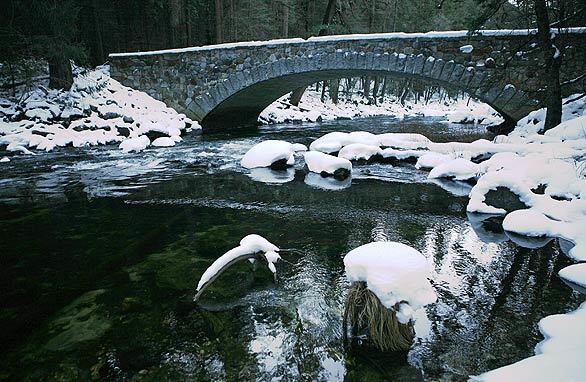
Snow covers the banks of the Merced River and the Pohono Bridge in Yosemite National Park. Citing the CCC as a model, the National Parks Conservation Assn., is pushing for the development of a National Park Service Corps. The group estimates that investing stimulus funds in parks would create roughly 50,000 jobs. (Brian Vander Brug / Los Angeles Times)
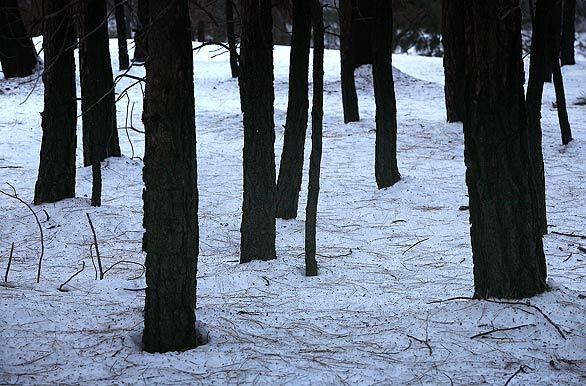
Trees blackened from a prescribed burn stand in contrast to a snow-covered landscape in Yosemite National Park. The National Parks Conservation Assn. testified before Congress that the nations 391 parks have billions of dollars in shovel-ready projects, some of them remnants of the systems more than $8.7-billion maintenance backlog. (Brian Vander Brug / Los Angeles Times)
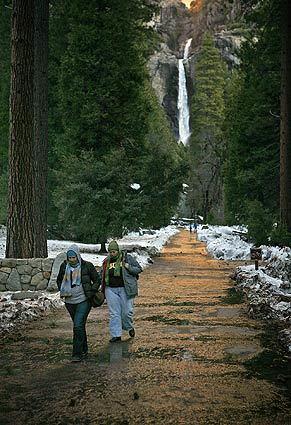
Park visitors walk along a path from Yosemite Falls. Former National Park Service Director Roger Kennedy, whose forthcoming book about the CCC and the parks is called When Art Worked, said the program was intended to heal the spirit of the workers as well as the nation. (Brian Vander Brug / Los Angeles Times)
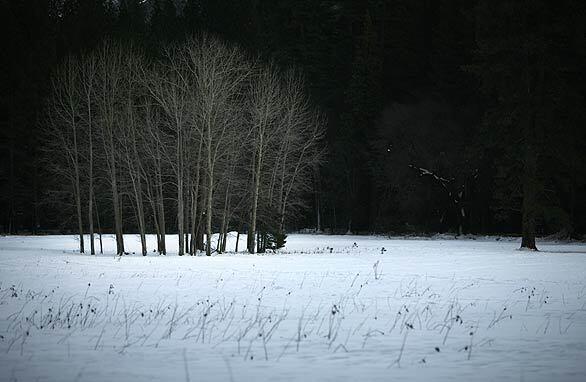
Aspens stand in Stoneman Meadow in Yosemite National Park. By the time the CCC program ended in 1942, corps members had planted 3 billion trees, prompting the nickname Roosevelts Tree Army. (Brian Vander Brug / Los Angeles Times)
Advertisement
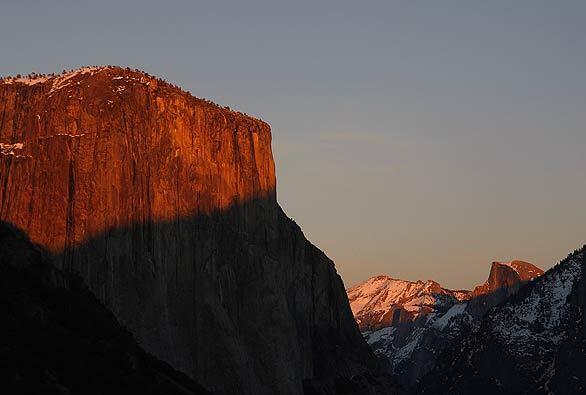
The setting sun lights the face of El Capitan, left, and of Half Dome, far right, in Yosemite National Park. There were about 600 CCC camps in various national parks during the programs 10 years. Yosemite had more than most, with 10 encampments scattered throughout the park, from the Valleys meadows to the high country and atop El Capitan. (Brian Vander Brug / Los Angeles Times)
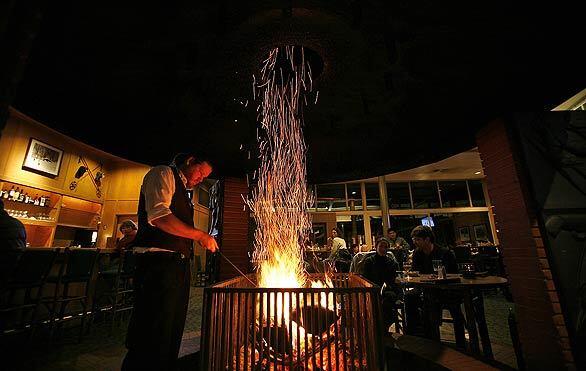
Sparks rise from a roaring fire at the Lodge at Yosemite Falls in Yosemite National Park. The rustic, rock-and-timber buildings and massive lodges constructed by highly skilled CCC artisans are now famously part of the national parks visual style, often referred to as parkitecture. (Brian Vander Brug / Los Angeles Times)
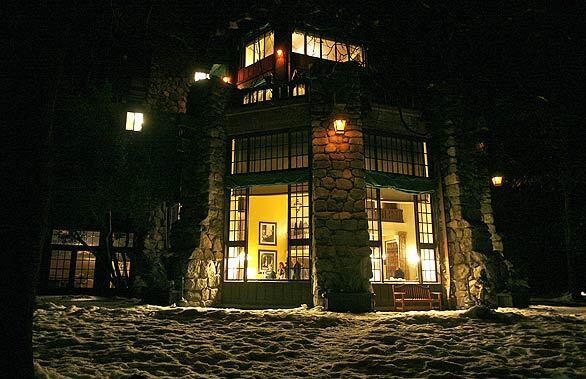
Light from a dining room at Yosemite’s Ahwahnee Hotel glows on the snow-covered ground outside. The parks 6,816 CCC enrollees built walls and buildings using rocks and trees. Those projects remain in the park today and help create Yosemites rustic look. (Brian Vander Brug / Los Angeles Times)
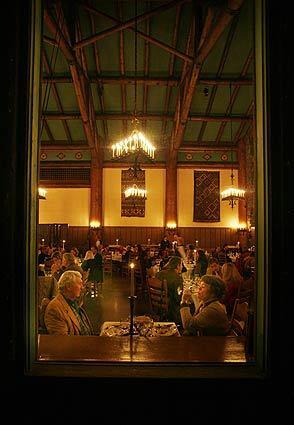
Visitors enjoy a meal in the Ahwahnee Dining Room in Yosemite National Park. (Brian Vander Brug / Los Angeles Times)
Advertisement
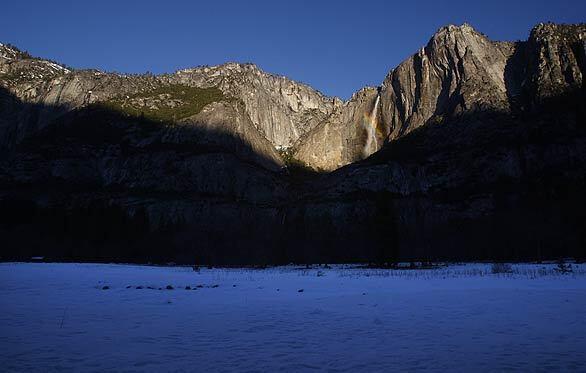
The rising sun casts a deep shadow on granite walls in a view from Yosemite’s Cook Meadow. About 300,000 men joined the CCC in three months, which at the time was the most rapid large-scale mobilization of men the country had ever witnessed. (Brian Vander Brug / Los Angeles Times)
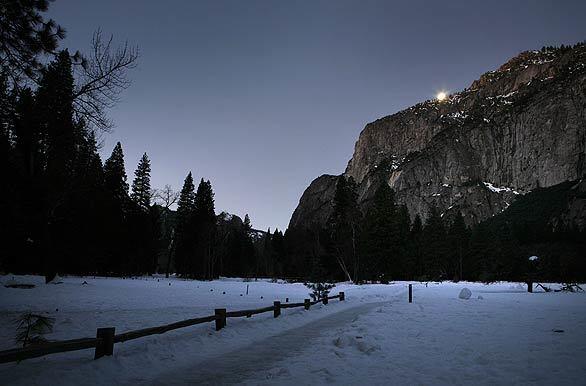
The moon sets behind El Capitan in Yosemite National Park. Theres a legitimate opportunity to make us part of the stimulus package, said Stephen Martin of the National Park Service. (Brian Vander Brug / Los Angeles Times)






